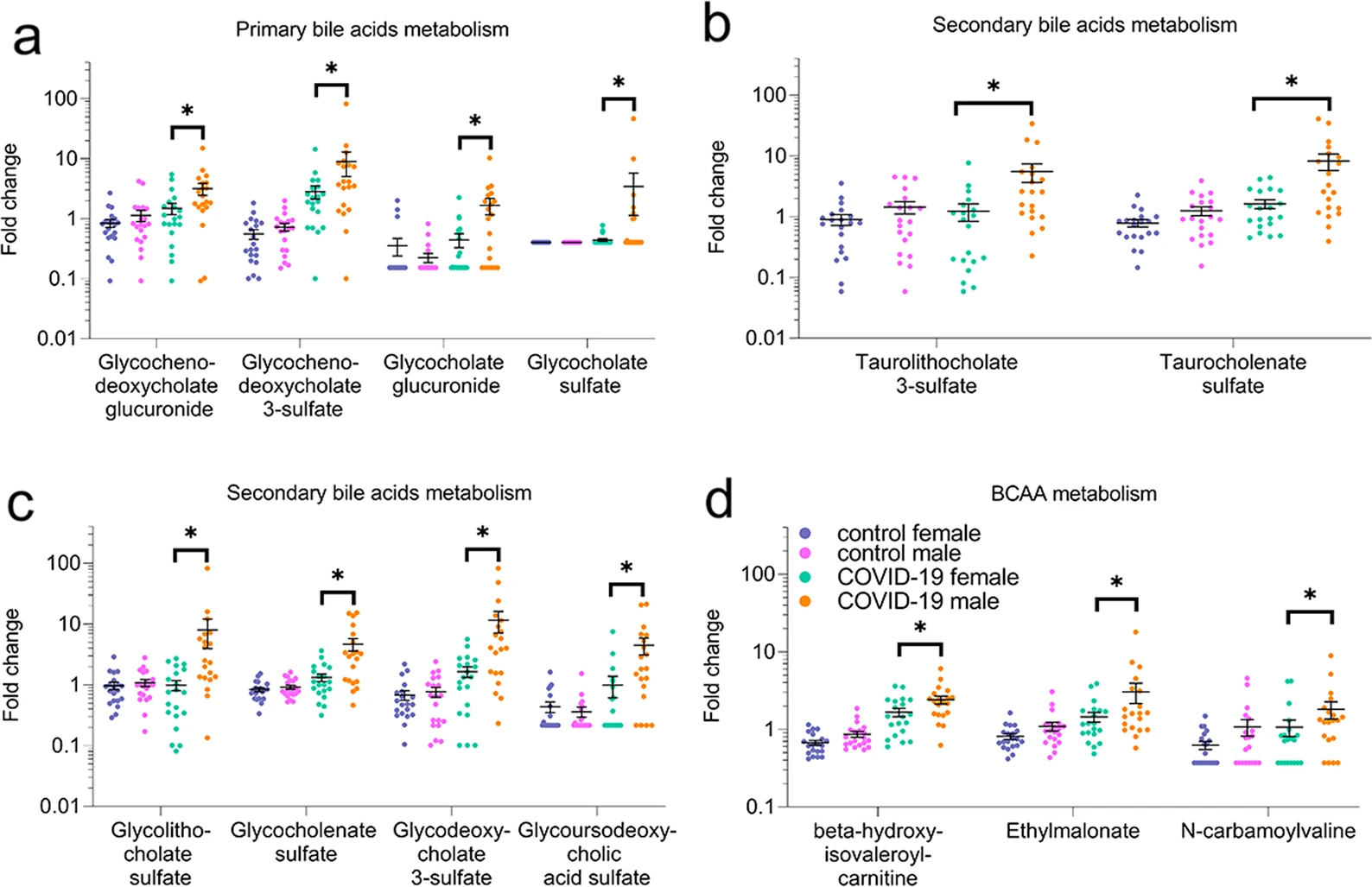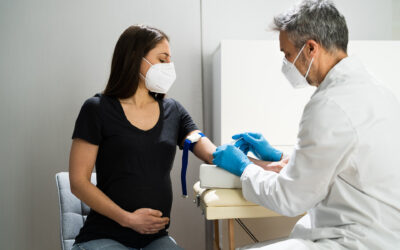Case Study
Sexual Dimorphism in COVID-19
Biological sex-associated metabolic differences in response to COVID-19 infection may lead to the development of more effective long-term treatments.
The Global Discovery Panel assisted in the analysis of serum samples, showcasing hundreds of biochemicals affected by COVID-19 infection in biological males and females. 182 metabolites varied significantly between sexes, suggesting sex-specific metabolic differences in response to Covid-19 infection.
The Metabolon Discovery: Global Panel assisted in the analysis of serum samples, showcasing hundreds of biochemicals affected by COVID-19 infection in biological males and females. 182 metabolites varied significantly between sexes, suggesting sex-specific metabolic differences in response to Covid-19 infection.

The Challenge: Is COVID Sex-specific?
COVID-19, also known as SARS-CoV-2, presents with an extensive range of symptoms. Some individuals are asymptomatic, while others experience mild to severe symptoms, such as loss of taste, pneumonia, and even death. COVID-19 vaccines and boosters are providing some protection against infection, but there is an under-studied area of research (sexual dimorphism) that could lead to new treatment methods.
Previously published research showed that the severity and prevalence of COVID-19 infection symptoms vary significantly in males and females. Male patients are more likely to experience “long COVID,” be hospitalized and require ICU care.1 However, many COVID-19 studies have not taken biological sex into account, leading to an insufficient amount of data on the unique effects COVID-19 has on sex-dependent metabolic pathways and associated biochemicals.1
Metabolon Insight: Hundreds of Affected Biochemicals Are Identified in Serum From COVID-19 Subjects
Using the Global Discovery Panel, which draws from a reference library of more than 5400 metabolites, hundreds of biochemicals were identified in serum samples collected from two different groups: COVID-19 patients and healthy “control” matched individuals. Principal Components Analysis (PCA) and Random Forest Analysis (RFA) were also performed comparing subject serum samples.1
The Solution: Potential Biomarkers in Lipid Metabolism, Amino Acid Metabolism, and More
Among the serum samples analyzed, more than 1500 biochemicals were identified, 182 of which were significantly different in COVID-19 infected males compared to females.1 ANOVA contrasts helped distinguish differences between COVID-19 and control samples, including sex-specific biochemical differences. Statistical significance was determined using a p-value≤0.05. Sex-associated differences identified with COVID-19 infection include biochemicals from lipid, carbohydrate, energy, nucleotide, steroid, and amino acid metabolic pathways (Figure 1).1 Amino acid metabolism was significantly altered by the presence of COVID-19 infection.1 Several amino acids were increased in males compared to females, including some branched-chain amino acid metabolites, which can enter the TCA cycle for energy production. Additionally, numerous metabolites from aromatic amino acids (phenylalanine, tyrosine, and tryptophan) were significantly higher in the COVID-19 males in relation to females, which can be associated with changes in gut microbial metabolism.

Figure 1. Sex differences in primary and secondary bile acids metabolism pathways and in valine, isoleucine, leucine (BCAA) metabolism in COVID-19 groups, not present in control groups. a Primary bile acid metabolism and b, c secondary bile acid metabolism pathways. d Branched-chain amino acids, valine, isoleucine, leucine metabolism, *p ≤ 0.05 (two-way ANOVA).
Copyright: The copyright holder of Figure 1 is the author/funder of Escarcega, et al., 2022. It is made available under a CC-BY 4.0 International license
Glucose can be used to support energy production, fatty acid synthesis, protein glycosylation, and nucleotide biogenesis. Glucose is metabolized through the glycolytic pathway in a series of metabolic steps generating pyruvate and lactate. Pyruvate can enter the TCA cycle and alter the energy state. Glucose and numerous glycolytic metabolites (eg, pyruvate and lactate), in addition to TCA-energy-related metabolites (eg, alpha-ketoglutarate) were significantly higher in COVID-19 subjects.
Numerous pentose sugar metabolites (eg, ribitol, xylose, and arabinose) were significantly higher in the male COVID-19 patients, while pyruvate was trending higher (not significant). Pentoses obtained from degradation of plant polysaccharides by bacterial enzymes can serve as a carbon and energy source for gut microbes. Differences in pentose metabolism further support altered gut microbial action in COVID-19 patients.
Variations in numerous co-factors and vitamins were also observed in this study. They were generally lower, including heme being significantly lower in male COVID-19 patients compared to females. Heme is required for oxygen transport and is catabolized through biliverdin to bilirubin. Bilirubin is further processed through a series of multi-organ metabolic steps into L-Urobilin which can be excreted in urine. In contrast to heme levels, L-Urobilin levels were extremely elevated in males compared to females. These heme metabolic signatures are a potential indicator of whether a male patient will exhibit extreme COVID-19 symptoms.1
The Outcome: Variations in Metabolite Levels Indicate COVID-19 is a Sex-Associated Disease
A variety of metabolic changes in COVID-19 patients were observed in this study, including lipid, carbohydrate, amino acid, heme, and microbiome related metabolic pathways. Male COVID-19 patients have been shown to present with higher levels of proinflammatory cytokines, while female patients have more robust T-cell activation than males.1 Additionally, the association between worsening COVID-19 disease outcome and insufficient T-cell response appears to only occur in male patients.1 Sex hormones are also thought to be potential contributors to COVID-19 severity since they assist in the immune response. Further studies with individuals who experience biological sex-related hormonal variations could assist in identifying the impact of hormones and COVID-19 disease outcome.1 The metabolomic signatures identified in this study showed crucial variation between males and females infected with COVID-19. Understanding COVID-19 as a biological sex-associated disease could help provide greater direction for future therapeutic targets.
References
1. Escarcega RD, Honarpisheh P, Colpo GD, et al. Sex differences in global metabolomic profiles of COVID-19 patients. Cell Death Dis. 2022;13(5):461. Published 2022 May 14. doi:10.1038/s41419-022-04861-2




